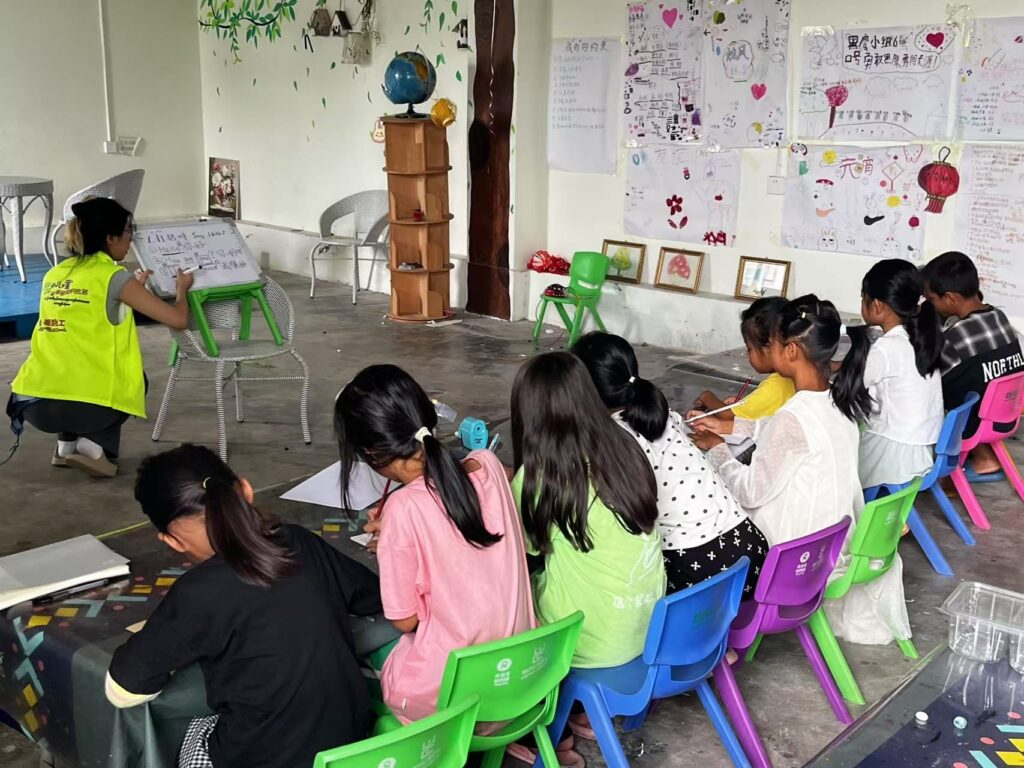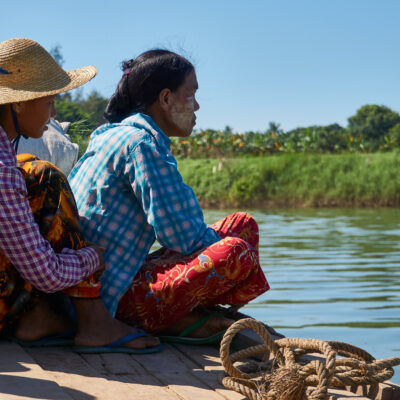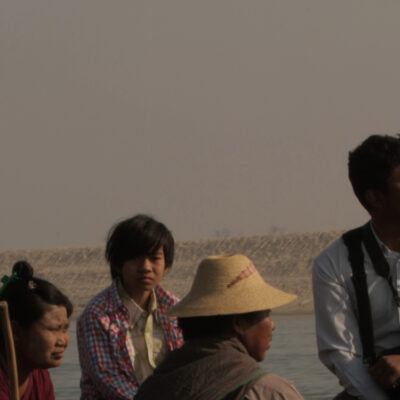Serving the needs of foreign national communities in the China-Myanmar borderlands is an immense challenge for any social work organization (SWO).
These regions present multiple dilemmas including meeting urgent humanitarian needs with extremely limited resources; navigating the complex restrictions imposed by Chinese authorities, the Myanmar government, and ethnic minority administrations across the border; gaining the trust of extremely vulnerable foreign nationals; and working across national borders among cultural and geo-political tensions.
Despite these complexities, some Chinese SWOs are able to deliver essential services to foreign nationals, many of whom share ethnic ties with local communities despite the imposed national boundaries.
This article examines a Chinese SWO that we will refer to as the Frontier Center for Vulnerable Populations (not its real name). The Center is committed to addressing the needs of vulnerable immigrant groups, particularly Myanmar women and children, in this geopolitically sensitive region.
This study draws on seven rounds of fieldwork conducted in Ruili between December 2022 and November 2024. Using a mixed-methods approach—including internships, in-depth interviews with Center staff, participant observation, and analysis of internal documents—it captures both strategic and everyday practices in delivering social services to vulnerable, often Burmese-speaking, communities.
Social work in China’s borderlands: Reaching the unseen

Caption: Providing childcare to multiethnic children including from transnational families in Ruili, Jully 2023. Credit: Yiran Tian
In China, immigrants and refugees from neighboring countries often try to avoid mainstream society primarily due to their undocumented status. However, they desperately need essential services such as healthcare, education, and legal aid. Unlike in major cities such as Beijing and Shanghai where more resources are available, service provision in border regions has to be highly creative and adaptable, especially when serving foreigners. Strict immigration regulations and limited funding make it even harder for SWOs to provide access to basic support.
A central challenge is balancing national security with humanitarian aid. Border regions are politically sensitive, where maintaining stability often takes priority over social welfare. Many migrants and refugees in China fear seeking help from Chinese government-funded SWOs, worried about deportation or discrimination. However, without government funding, SWOs lack the access and resources needed to operate effectively. This creates a paradox—organizations must earn the trust of hidden populations while also complying with state regulations, which often include strict reporting requirements, alignment with government-approved agendas, and limitations on serving undocumented or politically sensitive groups, in order to maintain their legal status and access to resources.
Beyond direct service delivery, SWOs also play a vital role in shaping borderland communities. They help establish connections between residents, government agencies, and international organizations; establish support networks and advocate for marginalized groups. In our case, the Center expanded its operations across the border to deliver services directly in Myanmar.
Ruili City and the Frontier Center for Vulnerable Populations
Ruili, a vital trade hub in China on the China-Myanmar border, is home to diverse cultures, ethnicities, and religions. While this diversity fosters economic and cultural growth, it also creates significant social challenges. As one of China’s busiest entry points for foreign nationals, second only to Shenzhen, Ruili faces unique challenges such as irregular migration, stateless populations, refugee settlements, and human trafficking, placing immense strain on local governance and social services. The porous border and Myanmar’s ongoing political crises further exacerbate these issues, making social work in the region both essential and difficult. SWOs in Ruili must navigate a delicate balance between humanitarian aid and strict border security policies.
One of only a few organizations addressing these challenges is the Center. Founded in 2000 during an HIV/AIDS outbreak in Ruili, it was among the first to provide public health services to Myanmar women and children in China’s borderlands. Initially working with international NGOs and local women’s groups, the Center gained expertise in medical social work before expanding into broader community services. By 2004, it became a nonprofit organization not affiliated with the government, with a focus on vulnerable women, particularly those in transnational marriages. Acknowledging the transnational nature of these issues, the Center established a project office in Muse, Myanmar, as the first officially registered China-based SWO there.
Building trust with vulnerable communities
The Center has built trust and engagement with vulnerable communities on the China-Myanmar border through their cross-cultural capacity and the ability to navigate diverse social landscapes. Local knowledge—shaped by traditions, belief systems, and everyday practices—can only be accumulated through direct interaction, sensitivity, and immersion in those communities. An intern recounted her experience working with children in border villages:
“When I first started leading activities for children, a social worker reminded me that many had lost their parents. We were advised to avoid using words like ‘mother’ or ‘father’ and instead say ‘caregiver’ or ‘adult at home’ to be sensitive to their experiences.”
Another example of adaptation was the localization of their HIV/AIDS awareness programs. When introducing Highly Active Antiretroviral Therapy (HAART) in 2007, the Center went beyond simple translation of materials. Instead, they incorporated Dai ethnic stage performances into their campaigns, thus making the information more engaging and culturally relevant. This innovative approach helped fill a communication gap and ensured that the message resonated with borderland communities, particularly among multiethnic foreign nationals.
Understanding local power structures is another critical aspect of embeddedness. Traditional hierarchies, community leadership, and informal networks shape decision-making and social cohesion in border regions. A social worker recalled a moment of adjustment:
“When we invited women to share their stories at an event, they were hesitant, saying they didn’t feel qualified to speak first. Later, we learned they believed such activities should be led by village leaders or respected elders. From then on, we recognized the importance of honoring these power dynamics.”
This shift from one-way service delivery to a dynamic, two-way exchange also encourages border residents to take an active role in decision-making, fostering a sense of ownership and long-term engagement.
However, sometimes social workers also used strategies to gently nudge women to question and navigate the inherently unequal power structures that limited their agency. A former social worker stated:
“Sometimes, we had to pretend not to know the answer and ask them [the women]. Otherwise, they would just wait for instructions, assuming we were the experts.”
By honoring the community’s existing power dynamics—such as deferring to elders or male authority—social workers were able to build trust and create culturally appropriate spaces for dialogue. Once trust was established, women became more willing to voice their concerns and participate actively. Over time, their perspectives were more frequently incorporated into local decision-making processes, and their specific needs—ranging from childcare to livelihood training—were addressed more effectively. In addition, assisted by Frontier Center, some women’s groups have been formed which local ethnic minority women and some co-ethnic women from Myanmar in rural Ruili have become instructors of local intangible cultural heritage, such as traditional style weaving.
The Center is able to align its work with broader state policies, such as public health awareness, rural revitalization, and gender equality. While maintaining its independence, it strategically positions itself as an intermediary between vulnerable communities and the border governments, which bridges the gap between government agendas and the needs of marginalized groups.
Balancing State collaboration and organizational agency
The Center adopts various techniques to balance working with the Ruili government while also having a degree of independence. Operating in the politically sensitive China-Myanmar border region, the organization strategically embeds itself within government structures to gain legitimacy, access funding, and align with policy priorities. At the same time, it has to maintain a degree of separation to build trust with marginalized groups wary of government-affiliated initiatives. It is notable that such autonomy is tacitly supported by local governments, which find that SWOs like the Center can reach populations with which state agencies struggle to engage. This deliberate distancing offers flexibility and allows the Center to address sensitive issues that fall outside the state’s operational reach, especially vulnerable foreign nationals.
In its early years, WCC depended on government resources, including its operational funding, access to networks, and exclusive data, which were critical to launching programs such as HIV/AIDS prevention initiatives for sex workers. Government support provided necessary information to identify and reach the target population, but presenting as a government-affiliated body could have discouraged engagement due to the stigma surrounding sex work. The Center addressed this challenge by collaborating with the local Women’s Federation (a state-affiliated organization in China that focuses on promoting women’s rights, welfare, and participation in social and political life, often serving as a key partner in community-based initiatives); as well as the local Center for Disease Control and Prevention (a government-affiliated public health agency which implements national health policies at the local level) and positioning them as service providers rather than enforcement agencies. A program manager described this balancing act:
“The sex worker project was our flagship initiative. We built strong relationships by visiting service venues regularly. Trust spread by word of mouth, and eventually, the Center for Disease Control even began outsourcing services to us because we had the best access.”
The Center has also skillfully aligned its work with China’s national policies such as the Belt and Road Initiative, rural revitalization, and public health strategies. By integrating its mission in these frameworks, it secures institutional support while addressing pressing community needs. For example, through alignment with rural revitalization, it has been able to promote economic empowerment programs for women. These programs support women’s participation in local industries—such as handicrafts, agritourism, and cultural heritage work—thereby contributing to both individual livelihoods and broader community development goals. Similarly, its HIV/AIDS prevention services directly contributed to public health campaigns, which further cemented its reputation as a valuable partner.
Despite these alignments, the Center maintains a degree of independence by negotiating its involvement in government programs. A leader described their evolving approach:
“At first, we followed government directives without question. But over time, we learned to push back—sometimes being firm, sometimes emphasizing our challenges to gain their support. Officials mainly care about results, so our role is to make collaboration work on both ends.”
A crucial factor that enables the Center’s strategic autonomy is its diversified funding sources, including international donors, corporate partnerships, and other resources such as access to academic-related staff. This reduces reliance on government funding and allows the center to decline requests that don’t align with its mission. It also continues to receive funding from Save the Children UK due to the successful AIDS prevention and care project that the two organisations delivered together. This provides long-term stability.
Keeping operational distance from the government enables greater adaptability in response to demanding challenges, such as refugee resettlement. In politically sensitive border regions, government responses are often delayed due to diplomatic complexities and security concerns. SWOs like the Center, as a first responder, intervene in crises before official agencies are prepared to act. However, this non-governmental status also places them in a precarious position, since they often have to act as intermediaries or scapegoats in politically uncertain situations.
Fixing social problems at home by expanding services abroad
Recognizing that many of the social problems in Ruili are rooted in conditions across the border, the Center expanded its services into Myanmar. This allowed them to immerse themselves in the socioeconomic and political-institutional contexts of a foreign country to more directly address the causes of issues such as human trafficking, statelessness, and poverty, while aligning their work with China’s broader Belt and Road Initiative.
A crucial component of this strategy was the employment of Myanmar workers as interpreters and on-site service providers. These employees brought invaluable cultural and linguistic expertise, which enabled the Center to navigate the complexities of Myanmar’s diverse communities. For example, when designing a health program on gender and sexuality, a Myanmar colleague advised against prematurely introducing sensitive topics because such discussions would be unacceptable in traditional and conservative villages. Instead, the Center partnered with a Buddhist nunnery school, a respected institution deeply embedded in the local social fabric, to deliver culturally appropriate interventions.
This cross-border approach requires institutional support from both Chinese and Myanmar authorities. In Myanmar, where formal institutions are often fragmented and undermined by corruption, the Center utilized informal networks to access key decision-makers. A well-connected Chinese businessperson played a role in brokering these relationships, which facilitated trust and dialogue between the organization and Myanmar officials and enabled the Center to navigate bureaucratic complexities. A key member of the Center described how the intermediary introduced them to various Myanmar grassroots organizations, especially Muse’s Women’s Union, which was more receptive to the social work initiatives due to the Center’s strong local presence in Myanmar.
Conclusion
Navigating the complex interplay of local, national, and transnational dynamics through various strategies, the Centre has demonstrated how social work can serve vulnerable communities while aligning with broader state and international objectives.
Their innovative approach has crucial implications for social work practice—particularly in politically sensitive and culturally diverse regions such as the China-Myanmar border—by stressing cultural sensitivity, operational flexibility, and strategic collaboration with both state and non-state actors. For policymakers, it underscores the value of supporting social work organizations as intermediaries to address challenges beyond States’ direct reach. Finally, the story of the Center is a testament to the transformative potential of borderland social work. By balancing community engagement, state collaboration, and transnational initiatives, they have improved the lives of marginalized groups and contributed to the broader goals of social cohesion, stability, and development in one of the world’s most complex regions. Their work challenges rigid national and cultural divisions, fostering inclusion and offering safe spaces for those in need. Success in this environment demands more than technical skills—social workers must navigate shifting political landscapes, understand local traditions, and try to address issues such as human trafficking, immigration policies, and stateless populations.
The future of social work in China’s borderlands hinges on a key question: How do we protect the most vulnerable while maintaining trust and access? The answer will shape the next phase of social work in these dynamic regions.
Authors: Yiran Tian & A/Prof Tianlong You.
Further reading:
- Balancing agency and alignment: Chinese NGOs in China’s international development.
- Book review: ‘Global Civil Society and China’ by Anthony J. Spires.
Main image: Delivering services to people of Deang Ethnicity (德昂族) on the China-Myanmar border (also called Ta’ang or Palaung) in February 2023. Credit: Yiran Tian.




